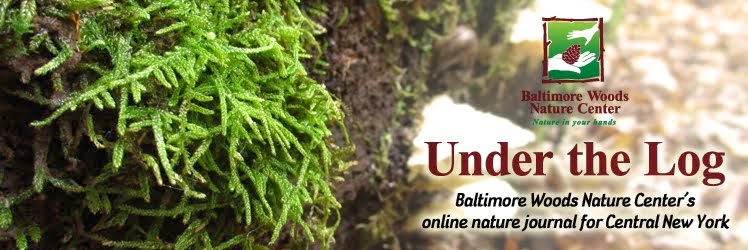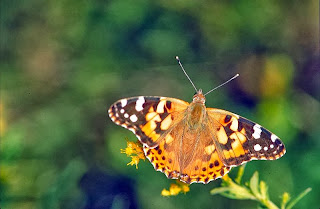 |
| Black walnut husks gathered on a stump. |
What does a black walnut look like?
Black walnut (Juglans nigra) trees have a tall straight trunk and leaves that can have over a dozen leaflets. The walnuts hang in clusters of two or by themselves. This time of year, just look for nuts on the ground that are about the size of a tennis ball and about the same color, too. Just don't try to bounce one. It won't work. Trust me, I've tried.
I've found a black walnut nut. Now what?
Pick one up and take a good whiff. They usually have a bit of a lemon-like scent, but if you pick one up after its been lying on the ground for a while, it may smell like a rotting lemon. This is normal.
The first layer is very fleshy and green, called the husk. Peel away the husk to reveal the nut. You may have noticed as you peel away the husk that now your fingers are getting a little discolored. Now they may smell like a rotting lemon. I suppose I should have warned you about this first. Black walnut husks contain a powerful dye. I might suggest wearing gloves before you hull your next walnut. Black walnut husks also contain an herbicide.
An herbicide, eh?
To other plants and some animals, yes it is but to humans it is generally non-toxic. This herbicide is called juglone and is found is the husk of the fruit and in the roots of the tree. If you have a black walnut tree, it's very likely that it's standing alone or among more black walnuts. The herbicide will prevent certain other plants from growing around the tree, therefore reducing competition for nutrients and space. This clever technique is called allelopathy.
What about the pie?
Inside those thick husks are delicious walnuts. One tree can produce about 100 pounds of nuts, that's equal to about 400 nuts per tree per season. That's a lot of nuts! Squirrels especially love these nuts but you can enjoy them, too. You can remove the husk and wash the nuts. Leave them out to dry for a few weeks and then you can crack open the shell and extract the meat of the nut. You can then use these nuts in whatever way you wish. How does black walnut pie sound?
Learn how to crack your own black walnuts:
Blog post by Anna Leiss





